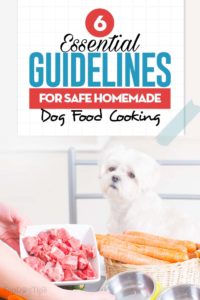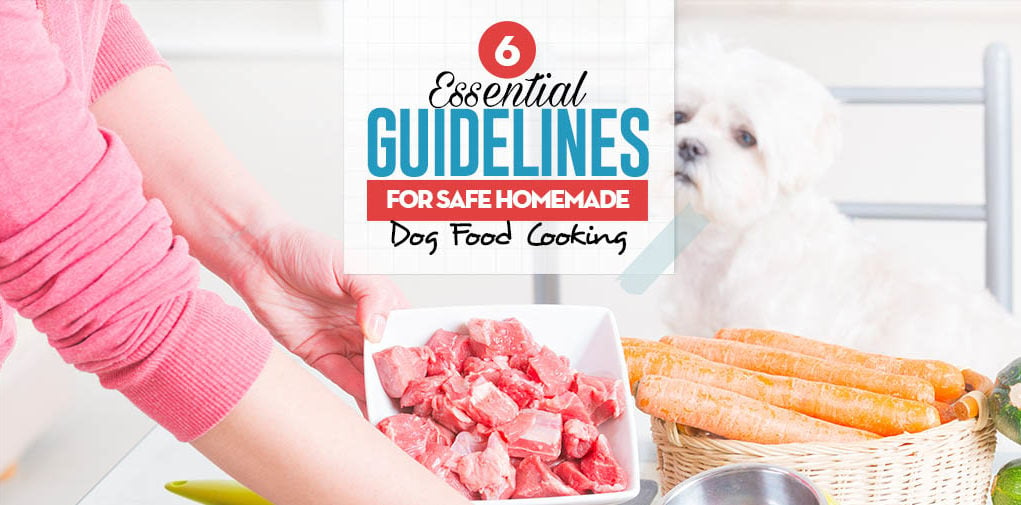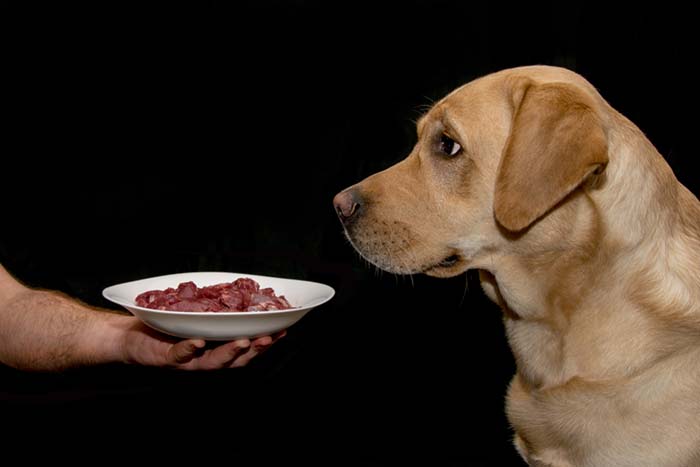Making homemade dog food for our pets is a tempting idea for a lot of owners, there's a good reason for that. In a way, homemade dog food can be cheaper than commercial kibble or wet food; it can be more delicious for the dog; but most importantly, when prepared properly, it can be much healthier for our canine buddies.
That last part is crucial, however, since homemade dog food is not as easy to cook as it may seem. In fact, several recent studies have pointed out the dangers of a homemade diet for dogs. Some research shows that more than 90% of dog food recipes online are actually subpar in quality, or that pet owners do not follow them properly.
Pet owners disregarding the vet's instructions when preparing homemade dog food is the key issue here. For example, another study by the Clinical Nutrition Service, Teaching Veterinary Hospital of the College of Agrarian and Veterinarian Sciences, São Paulo State University, gave a proper dog food recipe to 59 dog owners and studied the way people followed them. 30.4% of the dog owners purposely changed the recipe, 40% didn’t match the proportions of the ingredients, 73.9% used the wrong amount of soybean oil and salt, and 28.3% didn’t use any of the necessary supplements, vitamins and minerals.
Even though homemade dog food is a great idea in and of itself, veterinary specialists still often recommend against it because of the high risk of feeding your dog improperly. Samantha has recently published a video/article on making appropriate substitutions to your homemade dog food meals, and we have a list of common homemade dog food ingredients that you're likely to use in these recipes. Now, here are a few pointers on further nutritional guidelines for those who choose to switch to homemade feeding.
ALSO READ: 13 Balanced Homemade Dog Food Recipes
6 Essential Nutritional Guidelines for Safe Homemade Dog Food Meals
1. Keep It Well-Balanced
Good homemade dog food must contain the right proportion of ingredients that your canine requires based on the dog's age, size, breed, activity, and health. Skipping one component or going overboard with another can have a negative effect on your dog’s health, especially if it’s done consistently.
In general, for a well-balanced dog food meal, you can follow these percentages:
- 40% Protein – animal meat, seafood, eggs, or dairy
- 10% Carbohydrates – grains and beans
- 50% Vegetables
- Fat – from oil or meat
- Calcium – crushed or powdered eggshells; a supplement
- Fatty acids – cooked egg yolks, oatmeal, plant oils, and other foods
That said, it's generally impossible to recommend any best homemade dog food recipes for every dog, thus it's crucial that you discuss cooking for your pet with a veterinarian.
2. Consult with a Vet
As mentioned above, consultation with a vet is essential. There are plenty of negative things to be said about commercial dog foods: they contain way too many filler ingredients like corn and grains, often have little or poor meat source, and have too many artificial additives to make them enticing for the dog, and so on. Yet, even with all those negatives, commercial dog food still goes through supervision and certification. It still matches many standards, even if it often goes for the lower end of the scale.
Homemade dog food isn’t supervised by anyone but yourself. And as much trust, as you may have in yourself, it’s always best to consult with a professional, particularly about things you’ll be feeding your dog on a daily basis. Even if you’ve read a homemade dog food recipe on the most reputable veterinary website online, including our eBook with vet-approved dog food recipes, your personal veterinarian is still the only specialist that knows your particular dog's health specifics and condition, supplement needs, etc.
Before you begin feeding your Fido any homemade dog food, make sure you run the recipe by your vet. Better yet, collect several of your favorite recipes and bring them all in. One consultation will be enough to set you up for feeding your dog for several years. And if you want to be thorough, ask a few more specialists, including a canine nutritionist.
3. Use Supplements
Most homemade dog food recipes you can find online include just the basic ingredients. Even if those ingredients are healthy and nutritious, because of the low caloric intake, our generally sedentary dogs are unlikely to consume all the essential fatty acids, vitamins, and minerals they require.
READ MORE: What Supplements You Need for Homemade Dog Food
As Samantha pointed out in her article, it's very difficult to recommend supplements for all dogs in a general online article. Each dog is different, so once again, consult with your vet (and preferably with a canine nutritionist as well) about the particular homemade dog food recipe. Discuss your dog’s breed, sex, age, and physical condition and what supplements you need to add to that specific dog's meals.
4. Include Variety
One of the great things about homemade dog food is that you can cook different things every day or week. One of the many problems with commercial dog food is that once dog owners find kibble or canned food that matches their budget, they tend to feed it to their dogs for years. With homemade dog food you can experiment frequently – chicken one week, lean beef the next week, turkey the week after that.
Diversity is great, and it will provide your pooch with a number of healthy nutrients. Of course, this means that you’ll have to become proficient at cooking multiple different recipes. Generally, you cannot simply swap meat sources from one recipe without changing anything else – different meats have different content and properties. However, if you choose to pick crockpot dog food recipes, it will make your job much easier.
5. Mix With Kibble
If you are not 100% sure of whether your homemade dishes contain everything needed for a healthy doggy diet, consider mixing homemade food with commercial food.
The “better safe than sorry” principle still applies. If you’ve gotten your dog food recipe(s) from reputable sources and if you’ve double-checked them with several different veterinarians, but you’re still uncertain whether you’re missing one vitamin or supplement – consider alternating homemade and commercial dog food. This may not be the ideal scenario, but if the commercial dog food is of a high enough quality, it shouldn’t be much of a problem. At least you’ll be confident that your dog isn’t deprived of anything crucial.
6. Educate Yourself on Ingredients
 Dogs may be somewhat omnivores like us, but also just like us, there are some things that they simply can’t eat. And a lot of those things are foods that we as humans are quite used to. Definitely avoid these foods:
Dogs may be somewhat omnivores like us, but also just like us, there are some things that they simply can’t eat. And a lot of those things are foods that we as humans are quite used to. Definitely avoid these foods:
- Chocolate
- Onions and garlic
- Avocados
- Grapes and raisins
- Macadamia nuts
- Raw bread dough
- Alcohol
The above list is only the most well-known dangerous foods for dogs; however, there are plenty of fruits, vegetables, and other potential ingredients for homemade dog foods that can only be used in very low quantities or not at all. When structuring your pet's meals, make sure to research every single ingredient and how it will after your pooch.
READ NEXT: 50 Best Homemade Dog Food Recipes













